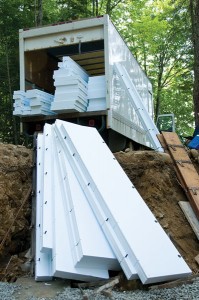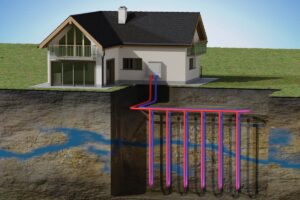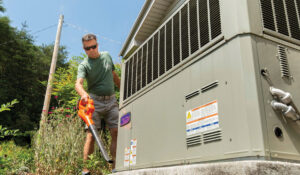 Most discussions about residential energy efficiency include the topic of insulation. Attic, wall and floor insulation normally become major points of discussion. Builders, homeowners, architects and salesmen use R-value language for comparing various types and thicknesses of insulation.
Most discussions about residential energy efficiency include the topic of insulation. Attic, wall and floor insulation normally become major points of discussion. Builders, homeowners, architects and salesmen use R-value language for comparing various types and thicknesses of insulation.
It has been that way for as long as I can remember. However, energy efficiency experts are continuing to learn more and more about the actual performance of properly installed insulation. Infrared thermal imaging cameras, used in conjunction with home diagnostic equipment, are revealing that some types of insulation perform differently in a real-world environment than in a controlled climate within a testing facility. For instance, the actual performance of a fiberglass-insulated wall on a cold, windy, 30-degree day is far different than the exact same fiberglass-insulated testing wall within a cozy, 70-degree testing laboratory.
While I was in college studying architecture, we were taught that about all you needed to know about insulation was the R-value. Back then, we only knew of one type of insulation and that was fiberglass. So, when we were challenged in the early 1970s to make homes more energy efficient, just about all of us started installing insulation with higher R-values. Many went from 2 x 4 walls with R-11 insulation to 2 x 6 walls with R-19 insulation. We perceived that adding more insulation did help some, but we learned it was not as much as expected.
The “R” in R-value stands for the resistance to heat flow. In theory, and in some cases, the larger the R-value, the better the resistance to heat flow and, therefore, the better for energy efficiency. So, for several years, that’s all we knew about insulation.
Then we learned about another type of product called cellulose. We learned it worked extremely well when used as a sound barrier and were told it was a very good insulation for walls and ceilings. We used it and quickly learned it performed better than fiberglass even though cellulose insulation has nearly the same R-value as fiberglass. When installed properly, we saw a dramatic reduction in air infiltration. The similar R-value rating was perplexing to many of us. But, about this same time, we were learning that by using a blower door diagnostic testing device, air infiltration could have a significant impact on the energy efficiency of a house and on the performance of the insulation.
The more we tested homes and looked at utility bills, the more we were convinced there was a major difference in the actual performance between fiberglass and cellulose insulation. Because of that, many of us started recommending cellulose whenever possible. Practical experience, proven building science and much improved diagnostic processes have proven that properly installed cellulose insulation is a wise investment.
Then came foam insulation and we were impressed. Now we had two insulation products that actually performed like we desired. But wait. Not so fast. Some of the early foam products were thought to contain chemicals that were unhealthy, and some experts said foam insulation could also shrink after installation.
So, the use of foam in residential dwellings was almost non-existent until the late 1990s. Today, open- and closed-cell foam insulations are safe, reliable and, when installed properly, become exceptional thermal, air and moisture barriers — all three energy efficiency bonuses in one package.

info@philliprye.com, or call 501-653-7931.
Also, expanding-foam insulation is being installed in many new and remodeled homes across America. And five of the six co-op Energy Efficiency Home Makeover houses are performing well with foam insulation.
Despite the fact that all three types have similar R-values, practical experience and modern diagnostics have revealed that properly installed foam insulation outperforms its counterparts because of its ability to stop unwanted air-infiltration and for its moisture barrier attributes.
Call me at the office at 501-653- 7931 with any questions.









